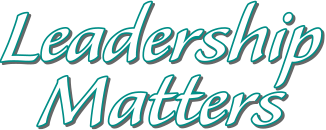Email is a terrific way to communicate quickly and effectively without having to resort to endless phone calls with work colleagues or clients/customers. Like all tools, used well, it can be a great time saver but used badly, it can undermine our professional presence at work. An article written by Jenni Chelenyak on the subject of email etiquette is a good reminder to use this business tool wisely as part of establishing our personal brand.
I have outlined 7 of her recommended 13 points.
- Consolidate. We wouldn’t walk into someone’s office multiple times a day nor should we send multiple emails either. Maybe scheduling a conference call, or a meeting would be in order.
- Let the recipient know what they need to do in the beginning of the email. Start the email with a request for action whether it’s for their input, approval or assistance with a project according to Chelenyak. The action will be noticed as busy people often don’t read beyond the first few lines of an email.
- Do not use email for sensitive or emotionally charged topics. It’s very difficult to convey the full message from reading text on a screen. There’s no body language or voice inflection to help understanding. Chances are good that feelings will be hurt because of misunderstandings. Never respond to an email when upset. Think about making a phone call instead to clear the air.
- Keep it short. If our recipient is a senior level executive who receives a high volume of emails every day, being concise is much appreciated.
- Consider our audience. Send emails only to those who will find it relevant and will have the wherewithal to help. Watch the CC button!! Does the whole office have to be copied? Chelenyak urges caution when copying management – even if we only want to keep them in the loop – some coworkers could perceive this as ‘throwing them under the bus”. Use the BCC with care. If the person doesn’t realize that they were in the BCC field and replies to the email, the recipient will know that we blind copied someone and this makes us look untrustworthy. Reply all can be thorny, also. If the person who sent the email failed to consider their audience, then just hit “reply” rather than “reply all”.
- Subject lines matter. The content of the email should match the subject line. We shouldn’t overuse “reply requested” or “action required” as these phrases can seem demanding. Never send a message without a subject.
- Be professional in our presentation. We shouldn’t use multiple or “hard to read” fonts or colors. Bolding or italicizing, too many words, misspellings, using all capitals, poor grammar, slang, emoticons or text acronyms should never be used in emails to clients, customers and managers. Always use a polite closing like “sincerely” or “thank you”.
These pointers are helpful for new graduates as well as for more seasoned professionals. The tips can be applied to personal emails, also. Making the choice to use good manners is a great step toward establishing positive relationships whether at home or at work.
Submitted by Maria Doll, certified Etiquette Consultant
Tags: audience, communicate, emails, graduates

Check out our Etiquette for Kids store!
Safe, online ordering!

